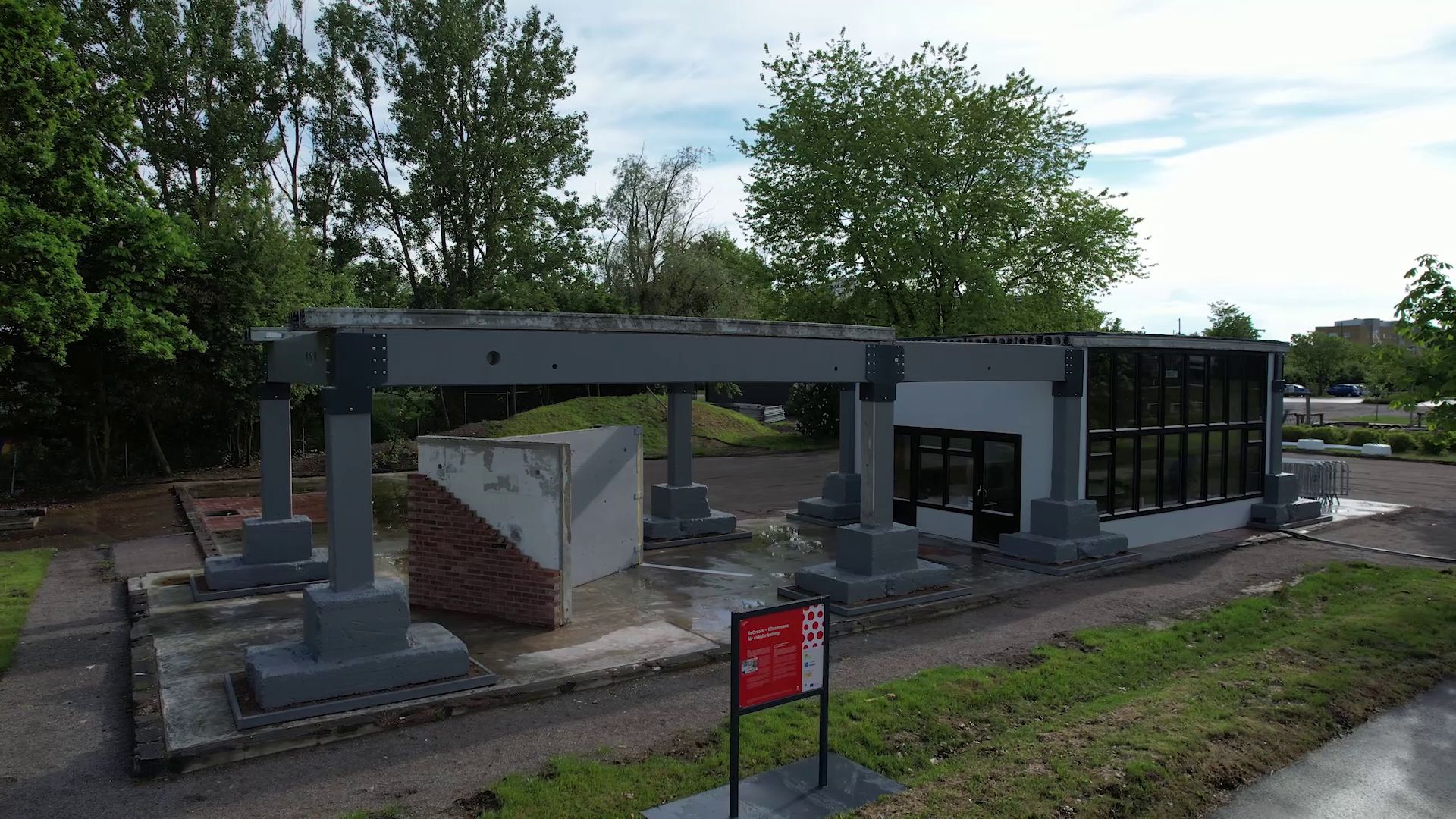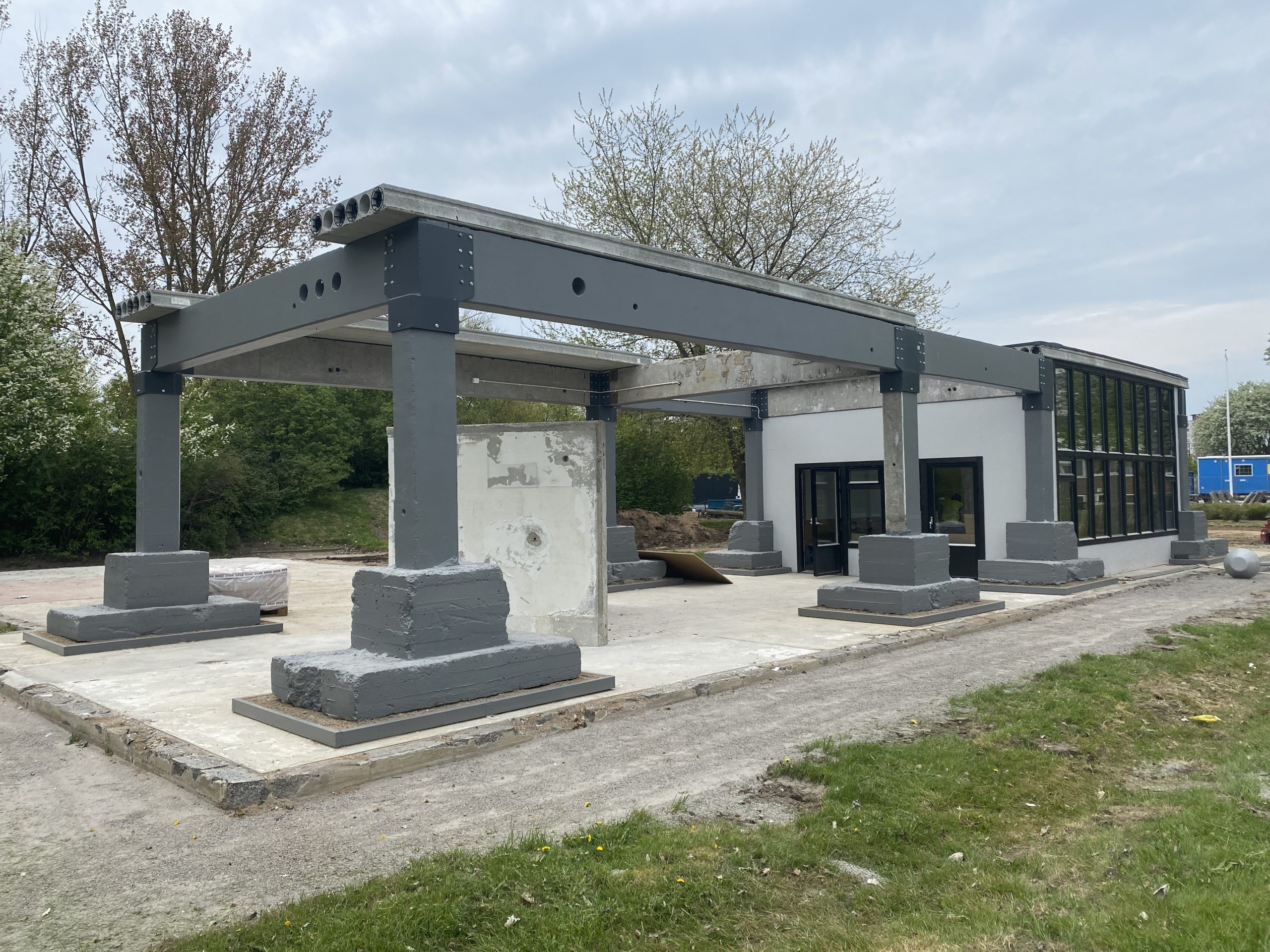ReCreate H22 Swedish pilot
A unique display of reuse
The ReCreate pilot is an exhibition building built of 99% reused material (by weight). The frame of the building is made of reused concrete from three different sources. Pillars and beams come from a warehouse building in central Helsingborg and the hollow core slabs are “factory rejects”) that otherwise would be crushed and mixed with new concrete in new elements from Strängbetong’s factory in Veddinge. The concrete foundation slab is from the preschool “Grodan” that previously stood on this site. Doors and window sections also come from the preschool. Internal sheeting material for the walls has also been reused. The carbon footprint is 92% lower when compared with the same building were built with new material after today’s standards. In addition, the building is designed for disassembly, i.e., built in such a way that it can be dismantled and the elements reused in another context. For example, all metal couplings between the elements are made to be easily disassembled. Let us know if you are interested in reusing the concrete elements from the ReCreate H22 pilot. In addition to the pilot’s three different concrete elements, the Drottninghög Elements are also reused concrete. They come from one of the apartment buildings that has been demolished to make way for new apartments in the residential area Drottninghög and show a kitchen, a floor plan and an example of an outer wall with recycled brick.


99% Reuse
The pilot is made of 99% reuse material (by weight).
92% less CO2 emissions
The carbon footprint of the pilot is 92% lower in the production phase when compared with new construction
Made for disassembly
The pilot is designed to be dismantled and the elements can be reused again in future projects.
A pilot project by:
Helsingborgshem
KTH
Strängbetong
KTH
Strängbetong
Together with:
Bricon
The utility specialist
Fojab
Ikano Bostad
NSR
Skanska
Tyréns
Trellegräv
Wihlborgs Fastigheter
Wigrens
Strängbetong
The utility specialist
Fojab
Ikano Bostad
NSR
Skanska
Tyréns
Trellegräv
Wihlborgs Fastigheter
Wigrens
Strängbetong
Pilot designed by:
Erik Stenberg, KTH School of Architecture
Helena Westerlind, KTH School of Architecture
José Hernandez, KTH School of Architecture
Helena Westerlind, KTH School of Architecture
José Hernandez, KTH School of Architecture

